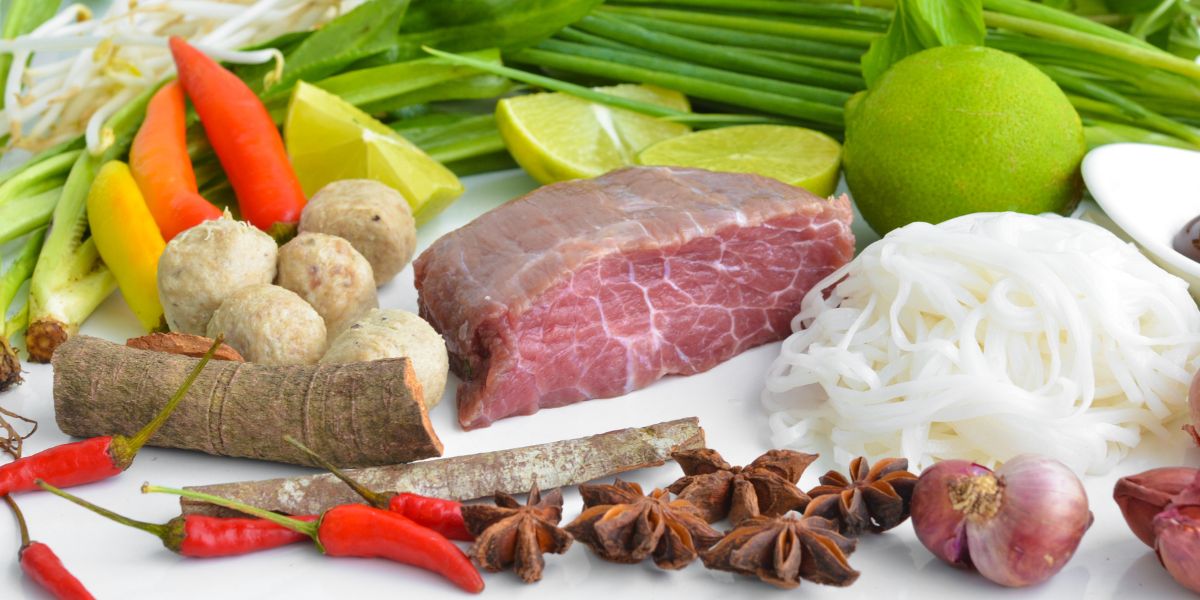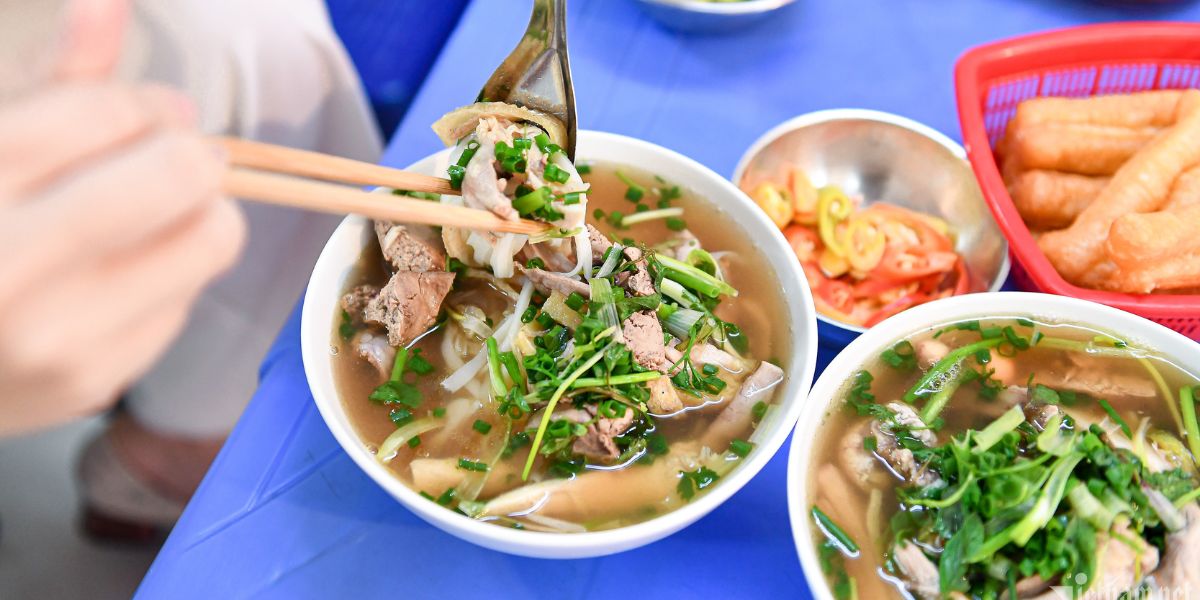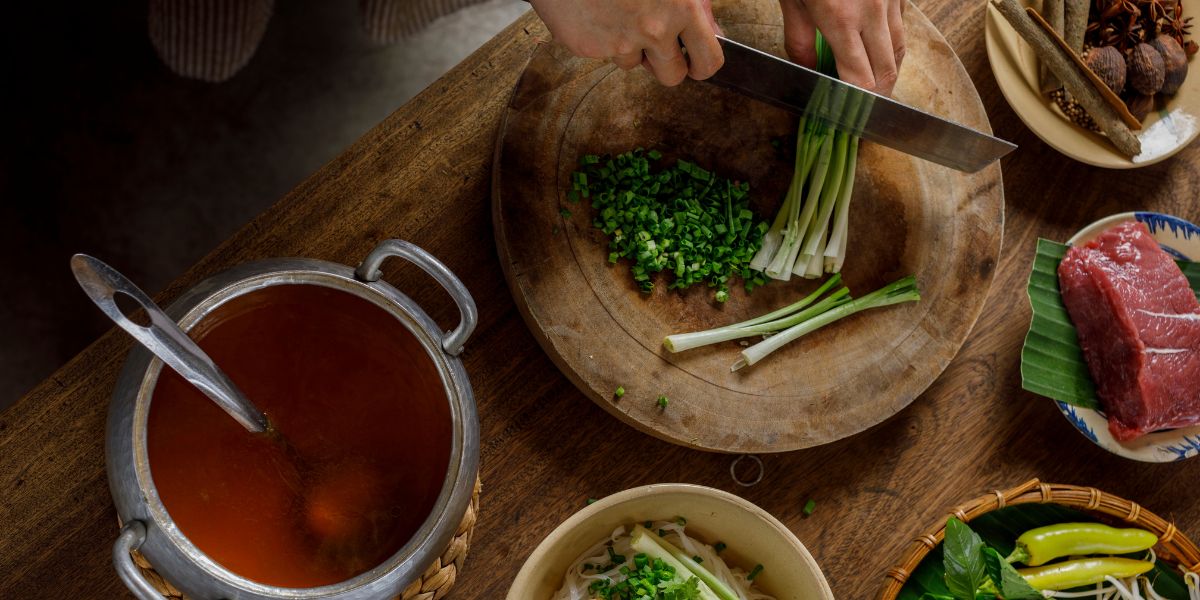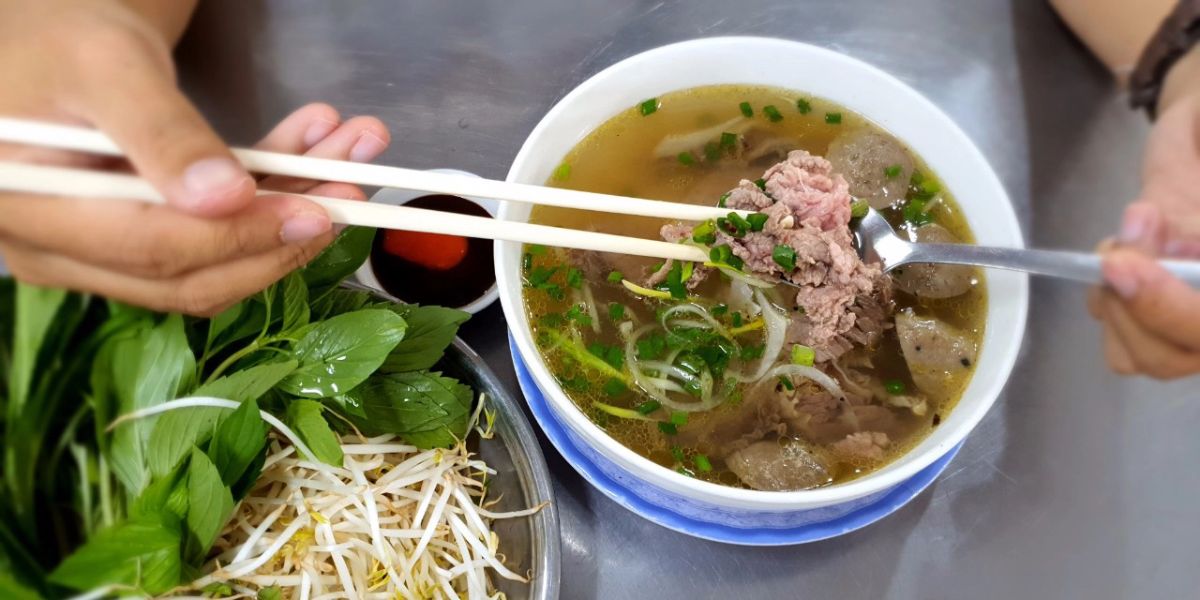Pho is a traditional Vietnamese dish originating from Nam Dinh and Hanoi. It is considered one of the symbolic dishes of Vietnamese cuisine. Pho is not just a dish; it is an experience that reflects the culture and history of Vietnam, a culinary journey that takes you to the heart of this fascinating country. So what is Pho and how it's made? Let's check out below with Asiatica Travel!
1. What is Pho? Ingredients of Pho

Pho's main ingredients are:
-
Banh Pho: Traditionally made from rice flour, it is rolled out into thin sheets and then cut into strips.
-
Broth: Usually prepared by boiling beef (or pork) bones with various spices including cinnamon, star anise, roasted ginger, cardamom, cloves, coriander, and roasted dried onions.
-
Topping: Thinly sliced beef or chicken. The beef used for pho is typically from Vietnamese cattle breeds. Additionally, spices such as soy sauce, pepper, lime, fish sauce, and chili are added according to taste.
2. Why is Pho the Most Popular Dish in Vietnam?

Pho is a dish that encompasses all the characteristics of a typical Vietnamese dish:
-
Balance of Spices: Sour, spicy, salty, sweet, and rich in nutrients like protein, starch, and fats. Therefore, pho is good for health.
-
Preparation Method: The preparation is quite elaborate, requiring good culinary skills, making the dish hard to hybridize or vary.
-
Combination of Vietnamese Cuisine: It incorporates local ingredients like pho noodles, herbs, and preparations influenced by French cuisine, such as boiling bones and thinly sliced beef.
3. When to Eat Pho?
Pho is commonly consumed as breakfast or a late-night snack. However, in big cities, this dish can be enjoyed throughout the day.
4. History of Pho

Pho, as we know it today, originated in the early 20th century. Hanoi and Nam Dinh are generally considered the birthplaces of pho. In Nam Dinh, pho has roots in the Van Cu village, known for the Co family who spread the art of making pho to various parts of the country. In Hanoi, pho appeared in the early 20th century and became famous due to its spread in the city.
In 1939, chicken pho made its debut, as beef was not sold on Mondays and Fridays during that period. The exact reason for this shortage is unclear, but it might be because slaughtering cattle was restricted during the feudal era, as cattle were crucial for Vietnamese agriculture. Consequently, many beef pho vendors had to close on those days, allowing chicken pho to develop.
5. Why You Should Eat Pho? - Health Benefits of Pho

Pho is a combination of 18-20 natural animal and plant ingredients. The uniqueness of pho is that these ingredients are used almost in their original state and combine harmoniously to create a unique, delicious, and easily digestible flavor.
The broth is the fundamental part of pho. The calcium from the bones and marrow, combined with nutrients from tendons and cartilage, is extremely beneficial for joint health in the elderly and supports body development in the young. Additionally, the broth contains flavors from dried ingredients like cardamom, coriander, cinnamon, pepper, ginger, onions, fish sauce, and salt, which provide minerals (iron, zinc) and vitamins (B2, B3, B5), improving blood quality and helping protect blood vessels.
Beef contains many amino acids, creatinine, carnitine, and minerals like potassium, which support muscle development. About 50% of the fat in beef is unsaturated, with citric acid and vitamin B12, along with fresh vegetables, regulating cholesterol in the blood and body cells.
Fresh banh pho provides numerous nutrients to each diner (3 mg of protein, 0.5 mg of B1, 1.2 mg of B5 per bowl).
6. How to Prepare Pho at Home?

In Pho, the most important phase is the preparation of the broth. Traditional pho broth must be made by boiling beef bones with various spices. The bones should be cleaned and scraped, then placed in a pot with cold water. The first boiling water should be discarded to eliminate the unpleasant smell of beef bones; the second water is used to make the broth. Roasted ginger and onion are added. The heat is brought to a strong boil, then reduced and the broth is skimmed. A little cold water is added and the water is brought back to a boil for continued skimming... This process continues until the broth is clear and free of residues. Next, some spices are added, and the heat is adjusted so that the broth remains just at a simmer to avoid cloudiness and allow the nutrients from the bones to dissolve into the broth. The flavor of the broth mainly depends on the spices used.
However, the specific broth recipe for each pho restaurant is often kept secret. Generally, the spices include cardamom, ginger, star anise, cloves, coriander, cinnamon, dried onion, dried shrimp, and traditionally, an oxtail. The cooking method of the broth varies from region to region: in northern Vietnam, monosodium glutamate is often used, while in the south, many people prepare the broth with chicken bones and add dried squid.
Eating pho is not only a culinary pleasure but also a way to enjoy a nutritious and healthy meal.
7. Presenting a Bowl of Pho
To prepare a perfect bowl of pho, start with the noodles (banh pho), which are first immersed in boiling water and then drained. The banh pho is placed in an appropriately sized bowl and gently mixed with chopsticks to prevent sticking.
Next, thinly sliced beef or, depending on preferences, other types of meat are added so that each bite of banh pho also contains a piece of meat. The colors of the dish include the white of the banh pho, the brown of the beef, and the yellow of the fat—combined with the green of onions, coriander, and fresh onion to make the dish aesthetically pleasing and appetizing.
The final step is to pour the hot broth into the bowl. This requires careful attention, as the broth must be poured evenly over the surface of the pho, around the pieces of meat, to ensure that the meat cooks evenly while keeping the green color of the onions and fresh coriander on the surface.
8. Different Types of Pho
8.1. Saigon Pho

In the southern provinces of Vietnam, pho is served with a plate of herbs such as green onions, bean sprouts, and various leaves like coriander and mint, including Mexican coriander leaves, which are characteristic of Saigon pho. However, in Hanoi, this plate of fresh herbs is not common. The rice noodles in the south are smaller compared to those in the north. The broth often does not contain monosodium glutamate as in Hanoi and has a slightly cloudy color, not clear like Hanoi pho. It is a bit sweeter, fattier, and is made with chicken bones, with the addition of dried squid or roasted onion and ginger.
8.2. Nam Dinh Pho
Nam Dinh pho is distinguished by the broth, which always contains a lot of ginger and fish sauce. This gives the broth a rich sweet flavor and less aroma of cinnamon and star anise. The rice noodles in Nam Dinh are wider because they are handmade and cut by hand, with a width twice that of the machine-cut noodles commonly found in Hanoi.
8.3. Vietnamese Pho Abroad
Most Vietnamese pho restaurants abroad use dried rice noodles instead of fresh ones, as in Vietnam, for preservation reasons. Many other places, even if they do not have "pho" in their sign, still offer this typical Vietnamese dish.
8.4. Instant Pho

Following the technology of instant noodles, instant pho was also created. Acecook Vietnam was a pioneer in producing instant pho. In 2006, Acecook Vietnam produced the first instant pho made with rice flour.
9. Where to eat pho in Singapore?
Here is a list of the best Vietnamese restaurants in Singapore that serve Vietnamese pho:
Mrs. Pho
221 Rangoon Road, Singapore
Website: https://www.mrspho.com/
NamNam Pho
501 Orchard /B2-02 Wheelock Road
Website: https://namnam.net/
Fat Saigon Boy
01-02, 51 Telok Ayer St, Singapore 048441.
Facebook: Fat Sagion Boy
Saigon Alley
273 Thomson Rd, #01-06 Novena Gardens, Singapore
Facebook: Saigon Alley
Red Sparrow
11 Dempsey Road #01-18, Singapore
Facebook: Red Sparrow
Vietnamese Delights Pho 99
57/58 Amoy St, Singapore
Website: https://vietnamesedelights.wixsite.com/menu
Signs a taste of Vietnam Pho
277 orchardgateway B2-15, Singapore
Website: Signs a Taste of Vietnam Pho
Source: https://vietnam.travel/things-to-do/history-pho